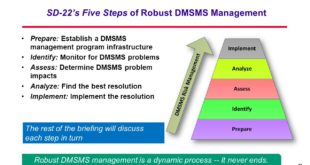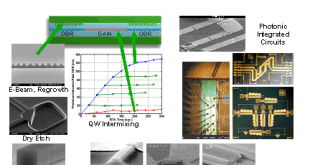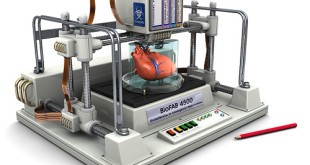Spacecraft are man-made machines that operate in space. An orbiting spacecraft is normally referred to as a satellite, although it is manmade as opposed to a natural satellite like our moon. A spacecraft is typically subdivided into two major parts, the payload and the bus. Where the mission can …
Read More »Powering Space and Defense Missions: The Critical Role of Solid Rocket Motors (SRMs)
The function of the propulsion system is to produce thrust, which is the force that moves a rocket through air and space. Different propulsion systems generate thrust in different ways, but always through some application of Newton’s third law of motion. In any propulsion system, a working fluid is accelerated …
Read More »How the Department of Defense’s DMSMS Management Mitigates Obsolescence and Material Shortages
Introduction: Diminishing Manufacturing Sources and Material Shortages (DMSMS) pose significant challenges for industries worldwide, and the Department of Defense (DoD) is no exception. As a major procurer and user of advanced technologies and equipment, the DoD faces the constant risk of obsolescence and material shortages. However, the DoD has implemented …
Read More »Revolutionizing Material Science: The Power of Synthetic Biology in Creating Cutting-Edge Biomaterials for Body Armor, Self-Healing, and Fire Resistance
Introduction Material science has always been at the forefront of human innovation, driving advancements in various industries. With the emergence of synthetic biology, a new era of material development has begun. By harnessing the power of living organisms and their ability to engineer complex molecular structures, scientists are revolutionizing material …
Read More »Material platforms for Photonic integrated circuits (PIC) enable LiDAR, quantum and neuromorphic computing
A photonic integrated circuit (PIC) or integrated optical circuit is a device that integrates multiple (at least two) photonic functions and as such is similar to an electronic integrated circuit. The major difference between the two is that a photonic integrated circuit provides functions for information signals imposed on optical …
Read More »“3D Bioprinting” or “bioprinting” promise Human organs and tissues, for medical use in harsh military environments
In the UK, there are some 7,000 people on the list who are in dire need of organ transplants and In the US, the number awaiting transplant is around 120,000, with 20 dying each day for want of an organ. There is a large and growing need for an alternative to …
Read More »3D Printing revolutionising aerospace propulsion by production of motors & Rockets
3D printing or additive manufacturing is ongoing revolution in manufacturing with its potential to fabricate any complex object and is being utilized from aerospace components to human organs, textiles, metals, buildings and even food. Additive manufacturing is defined by ASTM International as the process of joining materials together, layer by …
Read More »Vehicle Manufacturing trends
Vehicle manufacturing has come a long way since 1908 when Henry Ford began production of the Model T automobile using a mass production assembly line.
Read More »Thermoplastic Welding for commercial and military aircrafts
The composites industry is constantly being shaped and reshaped by myriad forces – people, markets, technologies – all stimulating innovative new ways to apply fiber-reinforced materials in everything from boats and wind blades to airplanes and automobiles Thermoplastics are synthetic plastics that can be melted, shaped, and cooled to …
Read More »MEMS Manufacturing
Mechanical-Systems (MEMS) is the integration of mechanical elements (levers, springs, deformable membranes, vibrating structures, etc.), sensors, actuators, and electronics (resistors, capacitors, inductors, etc.) on a common silicon substrate through microfabrication technology. MEMS devices are today considered as one among the most promising technologies of this century, capable to revolutionize the …
Read More » International Defense Security & Technology Your trusted Source for News, Research and Analysis
International Defense Security & Technology Your trusted Source for News, Research and Analysis






